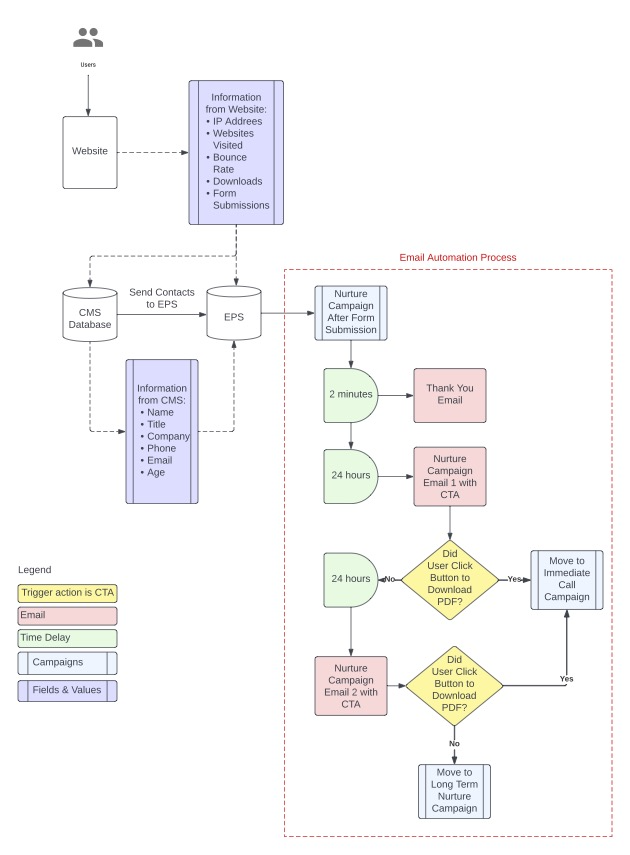A workflow diagram is an important component of building successful email campaigns.
What are Diagrams?
A diagram is a tool that organizations need to understand the connections and flows in their email marketing campaigns. Diagrams can be complex — involving hundreds of connections to external systems — or they can be simple, running on automations based on email activity.
Maximizing the Value of Connections
Every organization uses some variety of software that holds data about their customers. A diagram outlines the connections between those softwares and the ESP (Email Service Provider). Outlining every connection through diagrams helps determine which information organizations should use to build audiences and segments. Visualizing those connections, in turn, can help organizations see whether the data being passed is the correct one, or if they have an opportunity to build better segments and audiences. This is the largest benefit diagrams give the end-user — because segments and audiences are the backbone of successful email marketing campaigns.
The goal of diagraming every connection is to develop a complete picture of your client’s data.
Some of the fields and values that could be passed include — but are not limited — to:
- Age
- Gender
- Website Visits
- Last Date of Purchase
- Company Name
- Position / Job Title
The Benefits of Diagramming Automations and Triggers
Diagrams will be your map and your blueprint for the automations and triggers used in the organization’s email campaigns. A well-designed diagram is easy to follow and understand.
Automations Start Simple But Grow Complex
When all automations are diagrammed in an organization’s email campaigns, it will be simple to determine opportunities. The faster an organization identifies opportunities, new automations can be built to increase profitability. If challenges are found, then an organization can save money by addressing them quickly.
Triggers Are The Key To Push Users Forward
Triggers are signals to your automations to kick off a campaign, interject and remove a user from the campaign, or move them through a different campaign. If you can picture baking a cake, a trigger is the timer going off, letting you know the oven reached the temperature for baking. When set up correctly, triggers will push users through the email journey and deliver content at the appropriate times to maximize opportunity and meet the organization’s KPIs.
Triggers are important. As email campaigns expand, they rapidly become complex. Diagramming triggers accurately helps organizations stay nimble and react to opportunities or challenges efficiently.
Next Steps To Email Marketing Success
If your organization is considering email marketing, begin building out your diagrams. You can find fantastic tools that are free or low-cost to accomplish your goal. Ask team members how audiences and segments are connected, where the data is being pulled from, and what the ideal email sequence looks like. Knowing as much information as possible creates a strong foundation.
On the other hand, if campaigns have already been established, analyze all the triggers, automations, and connections to begin developing your organization’s email marketing diagram. Ask every team member involved in the email campaign if it looks accurate. The best part is you’ll likely discover areas of improvement and can present them to show the value the process gave.
